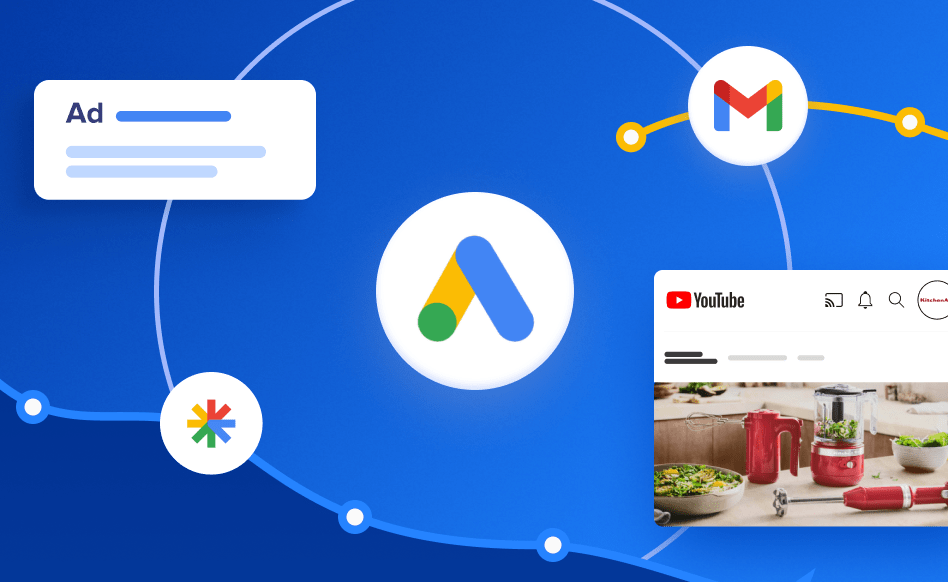When you search for something on Google, the results page is a carefully curated mix of organic listings and sponsored ads. While organic results dominate the left-hand side, ads occupy prime real estate above and below the fold, often catching your eye before you even realize it. But why do certain ads stand out more than others? What psychological principles guide Google’s ad placements and encourage users to click? Understanding the psychology behind these decisions reveals how Google maximizes engagement while maintaining user trust.
The Art of Placement: Where Ads Appear Matters
Google’s placement strategy is rooted in behavioral psychology, leveraging the principles of attention and hierarchy to guide users’ eyes toward ads. Research shows that people tend to notice the first few items they encounter, especially when they appear prominently on a screen. This phenomenon, known as the serial position effect , explains why ads placed at the top of the page enjoy higher visibility and click-through rates (CTR).
Above the Fold: The Golden Real Estate
The term “above the fold” refers to the portion of a webpage visible without scrolling. On Google’s search results page, the top three ads占据 the coveted above-the-fold space, ensuring they catch users’ attention before anything else. Studies show that ads in this region attract nearly twice the clicks compared to those below the fold. This placement taps into the principle of proximity , which suggests that people perceive items close together as related and worthy of consideration.
Advertisers competing for these top spots bid against each other using Google’s auction system, where factors like relevance, bid amount, and quality score determine placement. Higher bids and better quality scores increase the likelihood of securing premium positions, reinforcing the notion that visibility correlates directly with investment.
Below the Fold: Secondary Opportunities
While above-the-fold ads dominate, those positioned below the fold still play a crucial role. Positioned alongside organic results, these ads rely on contrast to draw attention. Unlike organic listings, which typically feature blue hyperlinks, ads stand out with distinct formatting—often bold text, colored backgrounds, or clear labeling like “Ad.” This visual distinction primes users to recognize ads as separate from organic content, making them more likely to click if they align with the user’s intent.
Below-the-fold ads also benefit from the mere exposure effect , where repeated exposure increases familiarity and desirability. Users who scroll past these ads multiple times may subconsciously associate them with trustworthiness or relevance, boosting their likelihood of clicking on subsequent visits.

The Science of Headlines: Crafting Compelling Messages
Headlines are the linchpin of any ad, serving as the primary hook to capture users’ attention. Google’s ad platform encourages advertisers to craft headlines that align with users’ search queries, tapping into the principles of matching theory and perceived relevance .
Matching theory posits that people prefer content that closely aligns with their current thoughts or queries. For example, if someone searches for “best coffee shops near me,” an ad labeled “Top-rated Coffee Shops Near You!” feels more relevant than one describing general café experiences. This alignment reduces cognitive load, making the ad feel like a natural extension of the user’s intent.
Perceived relevance also ties into expectancy violation theory , which predicts that deviations from expectations trigger heightened attention. Ads that deviate slightly from typical search results—by using humor, urgency, or exclusivity—can pique curiosity and prompt clicks. For instance, an ad that reads “Limited-Time Offer: Free Shipping on All Orders!” violates the expectation of standard pricing, encouraging users to investigate further.
Design Elements: Enhancing Visual Appeal
Beyond headlines, visual design plays a critical role in capturing attention. Google’s ad format allows for a mix of text, images, and call-to-actions (CTAs), each serving specific psychological functions.
Images: Visuals are processed faster than text, making them ideal for grabbing attention. High-quality images that align with the ad’s message—such as photos of products, landscapes, or people—create an emotional connection. This connection activates the brain’s ventral striatum , a region associated with reward and motivation, increasing the likelihood of a click.
Call-to-Actions (CTAs): CTAs like “Shop Now,” “Learn More,” or “Sign Up” serve as explicit invitations to action. These buttons activate the framing effect , where users are more inclined to act when presented with clear instructions. The proximity of CTAs to the ad’s main message also leverages the primacy effect , ensuring that users notice them immediately.
Timing and Frequency: Managing User Experience
Google’s ad placement strategy also considers the timing and frequency of ad exposure, guided by principles of habituation and optimal distinctiveness.
Habituation occurs when repeated exposure to the same stimulus reduces its perceived novelty. To counteract this, Google rotates ad placements across different sessions, ensuring that users encounter fresh content without feeling overwhelmed. This rotation aligns with the concept of optimal distinctiveness , where novelty maintains interest without disrupting the user experience.
Frequency also plays a role in ad performance. While some ads benefit from repeated exposure, others suffer from overexposure. Google’s algorithms dynamically adjust ad frequency based on user engagement, ensuring that ads remain salient without becoming intrusive.
Trust Signals: Building Confidence in Ads
Trust is paramount in digital advertising, and Google employs several psychological strategies to foster confidence in ads. One key method is the use of social proof , where the presence of reviews, ratings, or testimonials reassures users about the credibility of the advertiser. For example, an ad for a restaurant that includes a five-star rating feels more trustworthy than one without such validation.
Another trust signal is the halo effect , where positive attributes of one aspect (e.g., a well-designed ad) influence perceptions of other aspects (e.g., the brand). Google’s emphasis on ad quality score ensures that only ads meeting certain standards appear on the platform, reinforcing the perception of legitimacy.
The Role of Emotion: Triggering Action
Emotional triggers are woven throughout Google’s ad placements, tapping into fundamental human drives. Fear, curiosity, scarcity, and joy all play roles in motivating clicks.
Fear of Missing Out (FOMO): Ads that emphasize limited availability or time-sensitive offers exploit FOMO, a powerful motivator. Phrases like “Only 5 Left in Stock!” or “Sale Ends Tonight!” create urgency, triggering impulse purchases.
Curiosity: Ads that pose intriguing questions or present surprising facts activate the brain’s reward pathways, compelling users to click and learn more. For example, “Did You Know Your Coffee Contains This Ingredient?” prompts curiosity and encourages exploration.
Joy and Gratification: Ads showcasing positive outcomes or delightful experiences tap into emotional gratification. Seeing happy customers or beautiful products evokes feelings of satisfaction, making users more likely to engage.
The Impact of User Behavior: Shaping Ad Performance
User behavior profoundly influences ad performance, and Google’s algorithms continuously adapt to these dynamics. Factors like click-through rates, bounce rates, and conversion rates inform the platform’s evaluation of ad quality and relevance. Ads that consistently perform well gain higher visibility, while underperforming ads are demoted or removed entirely.
This feedback loop aligns with the principles of operant conditioning , where positive reinforcement (high CTR) strengthens ad placement, while negative reinforcement (low CTR) weakens it. Over time, this system ensures that only the most effective ads remain visible, optimizing the user experience.
Ethical Considerations: Balancing Engagement and Trust
While Google’s ad placement strategy prioritizes engagement, it must balance this with maintaining user trust. Practices like excessive targeting or misleading content can erode confidence, leading to decreased ad effectiveness. Google addresses these concerns through strict guidelines, transparent reporting, and user controls like ad preferences and blocking options.
Ethical considerations also extend to the psychological impact of ads. Excessive manipulation or exploitation of vulnerabilities can backfire, harming both users and brands. Google’s commitment to ethical advertising ensures that its platform remains a reliable space for businesses to connect with their audiences.
The psychology behind Google’s ad placements and click-through rates is a masterclass in human behavior. By leveraging principles like proximity, expectancy violation, and emotional triggers, Google crafts ad experiences that resonate with users while maintaining trust. From the strategic placement of ads above and below the fold to the careful crafting of headlines and visuals, every element is designed to maximize engagement while respecting user preferences.
Understanding these psychological drivers empowers businesses to create more effective ad campaigns, optimizing their visibility and impact. Whether you’re targeting high-intent searchers or nurturing brand awareness, the principles outlined here provide a roadmap for success. As Google continues to refine its algorithms, the intersection of psychology and technology will remain a fertile ground for innovation, ensuring that ads remain relevant, engaging, and trustworthy for years to come.
















Add Comment